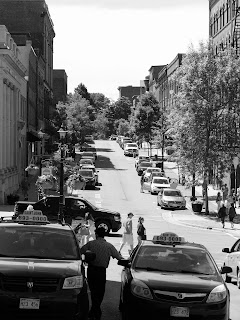If you know your cameras, then you will always recognise a Leica when you see it. Pretty much every Leica camera share a similar look. Rounded edges, all metal construction, similar dials and controls are all Leica "trademarks". The reviewers who have used various Leica's say you can look at a photo and always tell that it was taken on a Leica, they just have a look to their images, their colours, the amount of "noise" to their images also add to the "Leica look".
As great and iconic as Leica cameras are their is one major downside to their cameras that keeps them out of the hands of the average photographers.....they are greatly over priced. Even the most basic camera is around two thousand dollars. The most expensive of their cameras can run you close to ten thousand dollars. These price tags put the best of the Leica brands out of the reach of most photographers. Even the older, used film cameras sell for thousands of dollars.
So I will probably never own a Leica, however there are two Leica cameras that I wish other companies would take inspiration from. They are the Leica M Monochrom (type 246) and the Leica M-D (type 262).
The Leica M Monochrom is a very interesting and appealing camera, especially for those who like black and white photography....why? Because the camera's sensor only processes pictures in monochrome (B&W). As a Street Photographer who shoots mostly in black and white this is very appealing. The pictures even show up on the live view screen in black and white. Only thing that thing I don't like about the camera is the optical viewfinder. I would much rather it had an electronic viewfinder that shows the scene only in black and white. I think the optical viewfinder which shows the scene in color would take away from the appeal of shooting only in black and white. This camera, like all Leica is very over priced at almost eight thousand dollars (U.S. price).
I would live to see another manufacturer, like Fujifilm or Sony, take inspiration from these two cameras and make their own versions, at a much cheaper price. I especially would like another company to make a B&W only camera that the average person could afford. I would like to see a B&W version of the X100T or X30 from Fujifilm or a version of the Sony A6300. Now all of these already shoot B&W but I would like to see what they can do with a sensor dedicated to monochrome only.
So until either someone gets inspired by Leica and makes something similar to the Leica M Monochrom or the Leica M-D....or I win a lottery....my Leica Dreams are just that, dreams.




